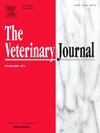Evaluating the effectiveness of 3D-printed bone models as educational tools in veterinary anatomy: Insights from students and teachers
IF 3.1
2区 农林科学
Q1 VETERINARY SCIENCES
引用次数: 0
Abstract
The study on veterinary anatomy education compared the effectiveness of 3D-printed models and traditional biological samples in student learning. A mixed-method approach involving 132 first-year veterinary students utilized pre-test/post-test assessments, surveys, and focus group discussions. Organic bone samples were scanned and 3D-printed for use in the study. Findings indicated that both 3D-printed models and biological samples significantly improved students' post-test scores. However, students trained with organic bones performed significantly better on the post-test than those using 3D-printed models, albeit with a small effect size (Cohen's d = 0.35). Survey responses highlighted the advantages of 3D-printed models, such as hygiene, accessibility, and precise anatomical replication. Students preferred a combination of 3D-printed and organic models, appreciating the former’s durability and consistency alongside the latter’s authenticity. While biological bones remain slightly superior for osteology education due to their realism, integrating 3D-printed models enhances accessibility and supports a more comprehensive learning experience. This hybrid approach addresses evolving educational needs, offering a balanced strategy for veterinary anatomy instruction.
评估3d打印骨模型作为兽医解剖学教育工具的有效性:来自学生和教师的见解
通过对兽医解剖教学的研究,比较了3d打印模型与传统生物样本在学生学习中的有效性。采用混合方法对132名一年级兽医学生进行测试前/测试后评估、调查和焦点小组讨论。有机骨骼样本被扫描并3d打印用于研究。研究结果表明,3d打印模型和生物样品都显著提高了学生的测试后成绩。然而,使用有机骨骼训练的学生在后期测试中的表现明显好于使用3d打印模型的学生,尽管效果较小(Cohen’s d = 0.35)。调查结果强调了3d打印模型的优点,如卫生、可访问性和精确的解剖复制。学生们更喜欢3d打印和有机模型的结合,欣赏前者的耐用性和一致性以及后者的真实性。虽然生物骨骼由于其真实感而在骨学教育中仍然略显优越,但集成3d打印模型增强了可访问性,并支持更全面的学习体验。这种混合方法解决了不断发展的教育需求,为兽医解剖教学提供了一种平衡的策略。
本文章由计算机程序翻译,如有差异,请以英文原文为准。
求助全文
约1分钟内获得全文
求助全文
来源期刊

Veterinary journal
农林科学-兽医学
CiteScore
4.10
自引率
4.50%
发文量
79
审稿时长
40 days
期刊介绍:
The Veterinary Journal (established 1875) publishes worldwide contributions on all aspects of veterinary science and its related subjects. It provides regular book reviews and a short communications section. The journal regularly commissions topical reviews and commentaries on features of major importance. Research areas include infectious diseases, applied biochemistry, parasitology, endocrinology, microbiology, immunology, pathology, pharmacology, physiology, molecular biology, immunogenetics, surgery, ophthalmology, dermatology and oncology.
 求助内容:
求助内容: 应助结果提醒方式:
应助结果提醒方式:


